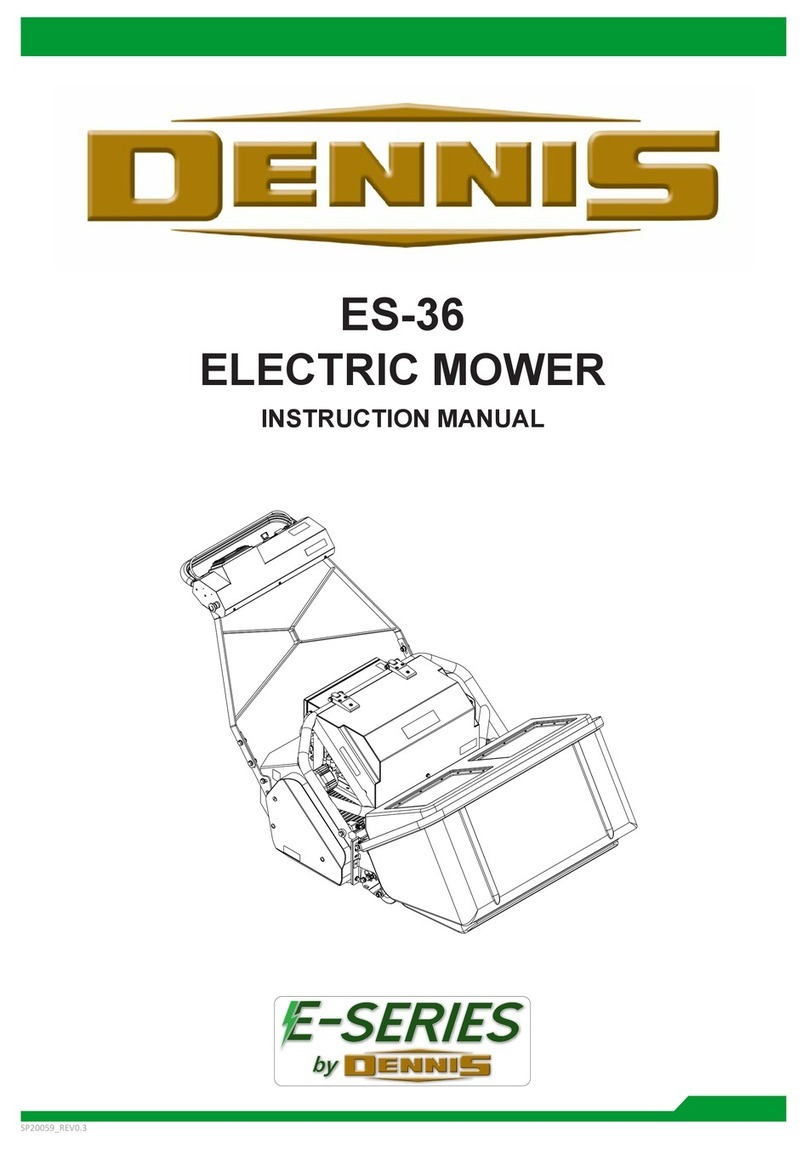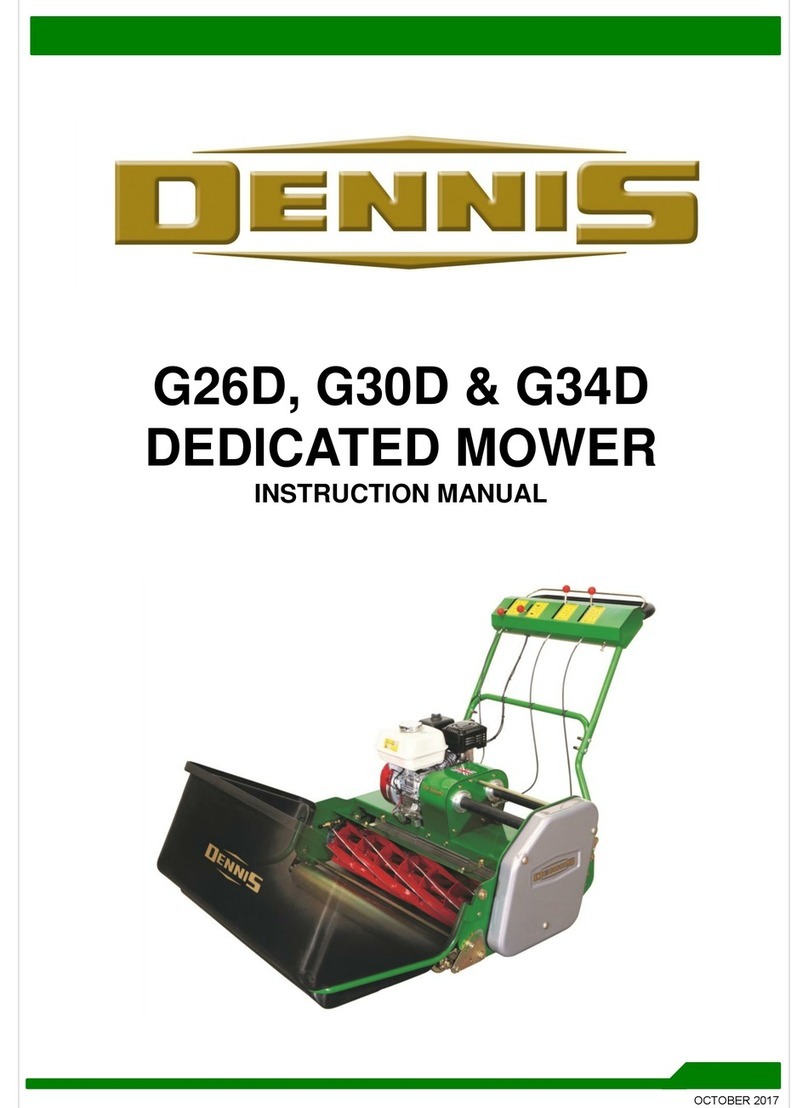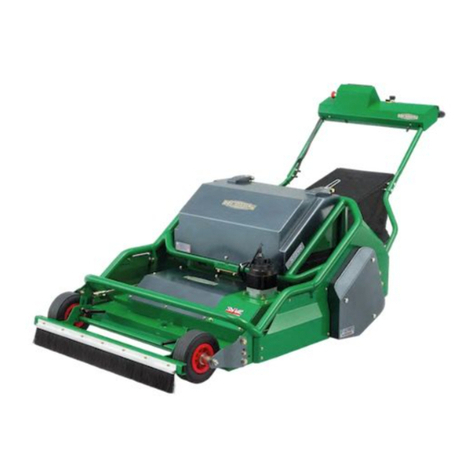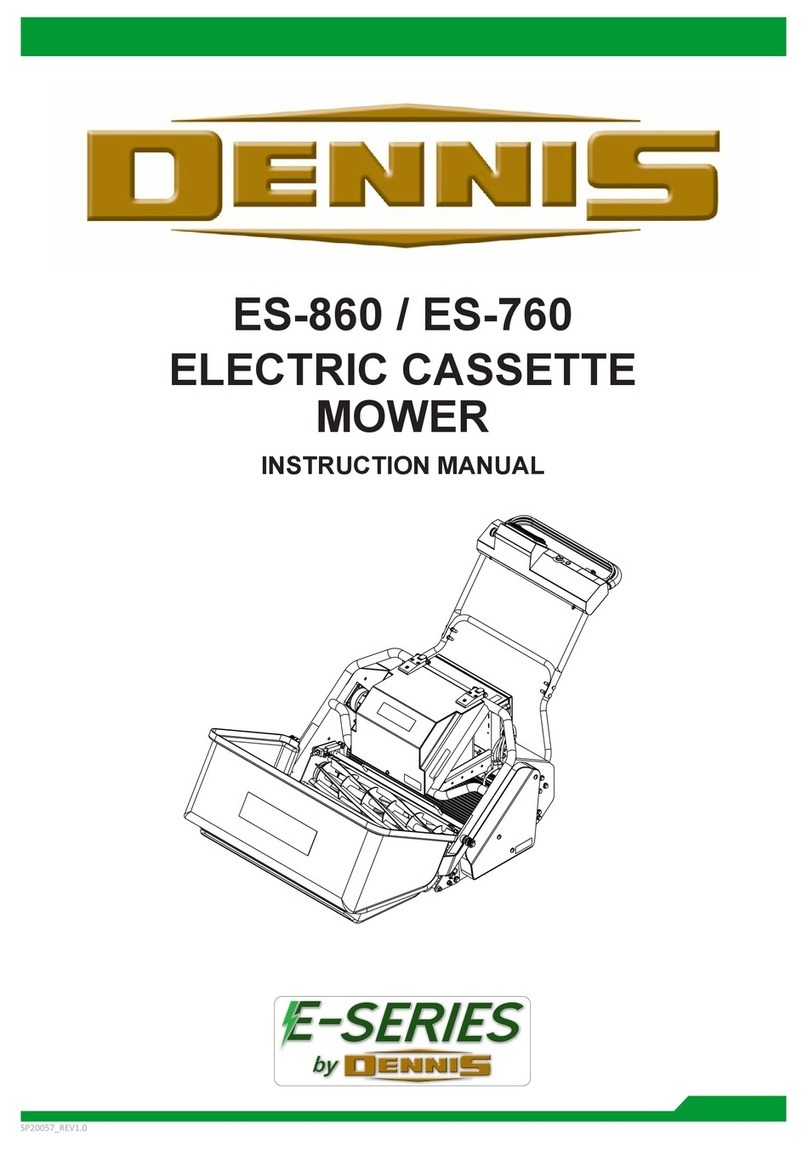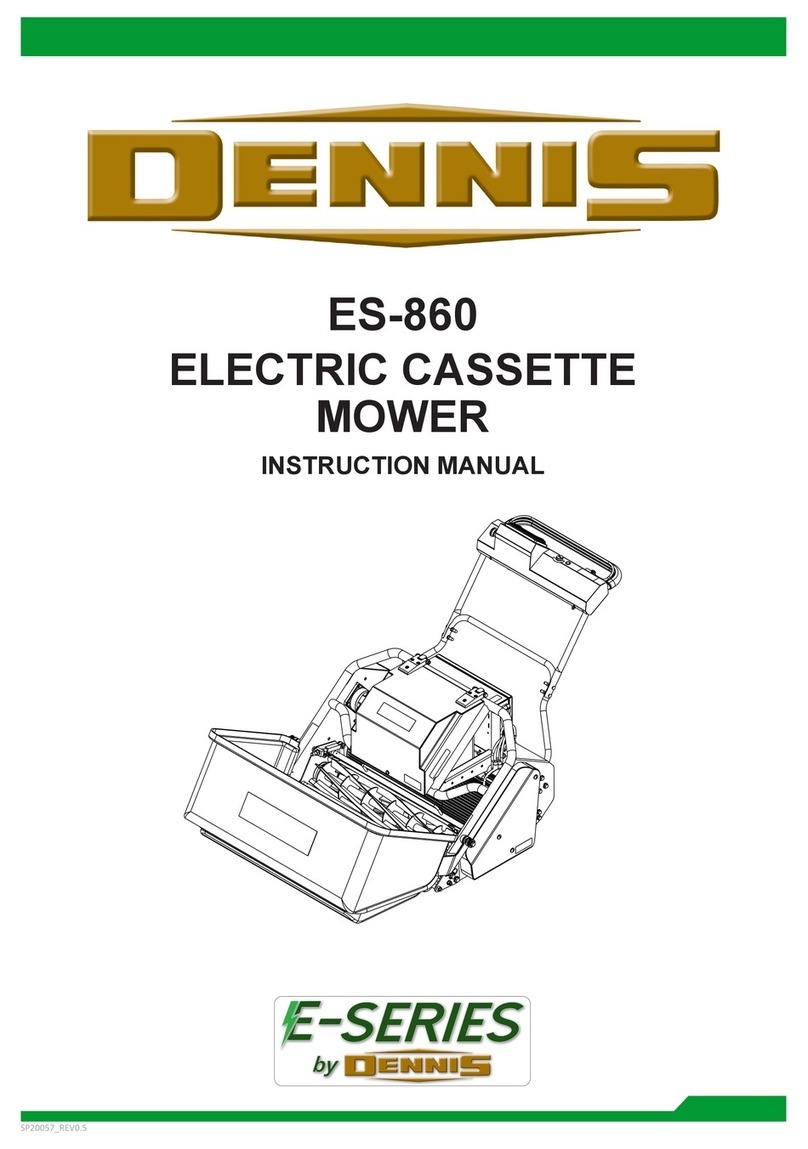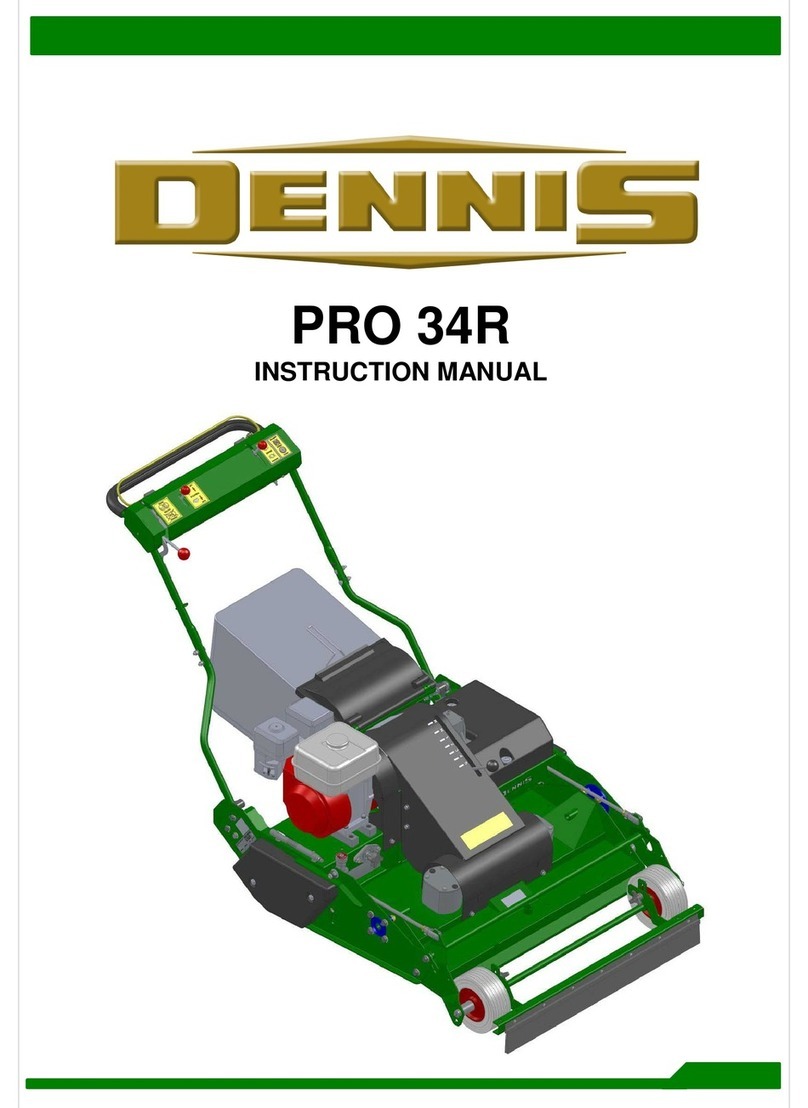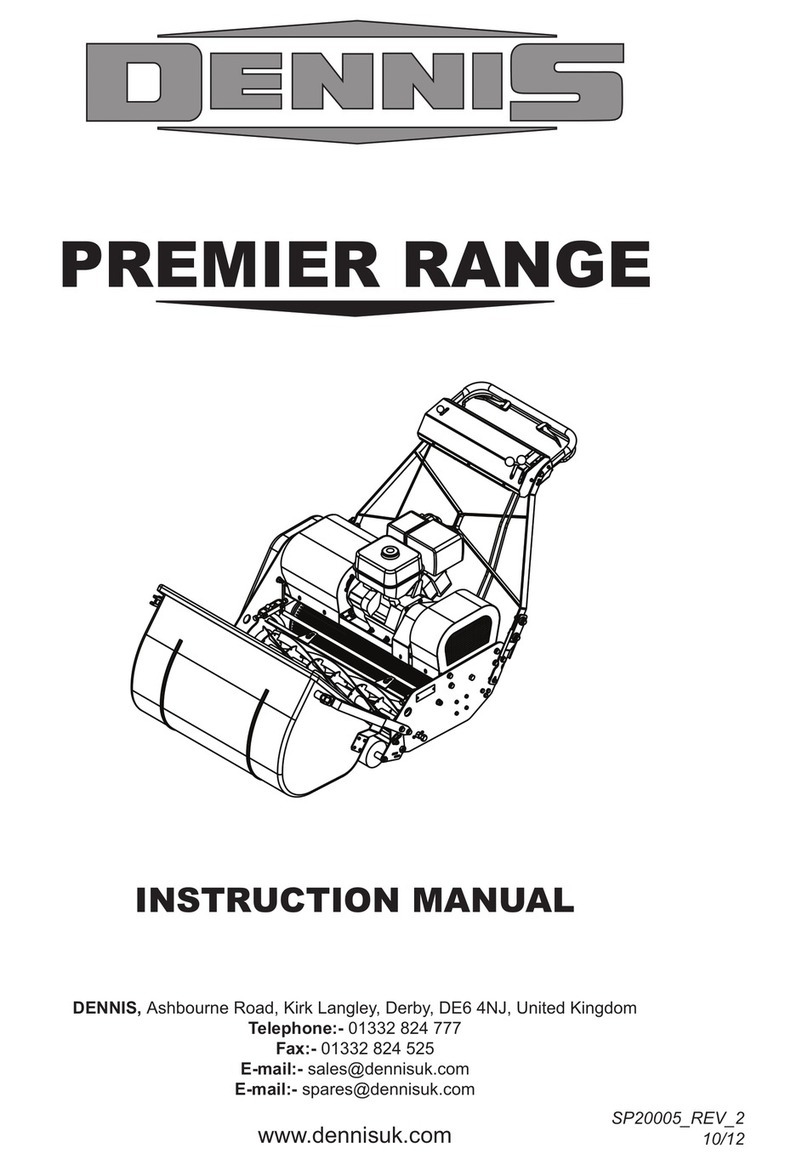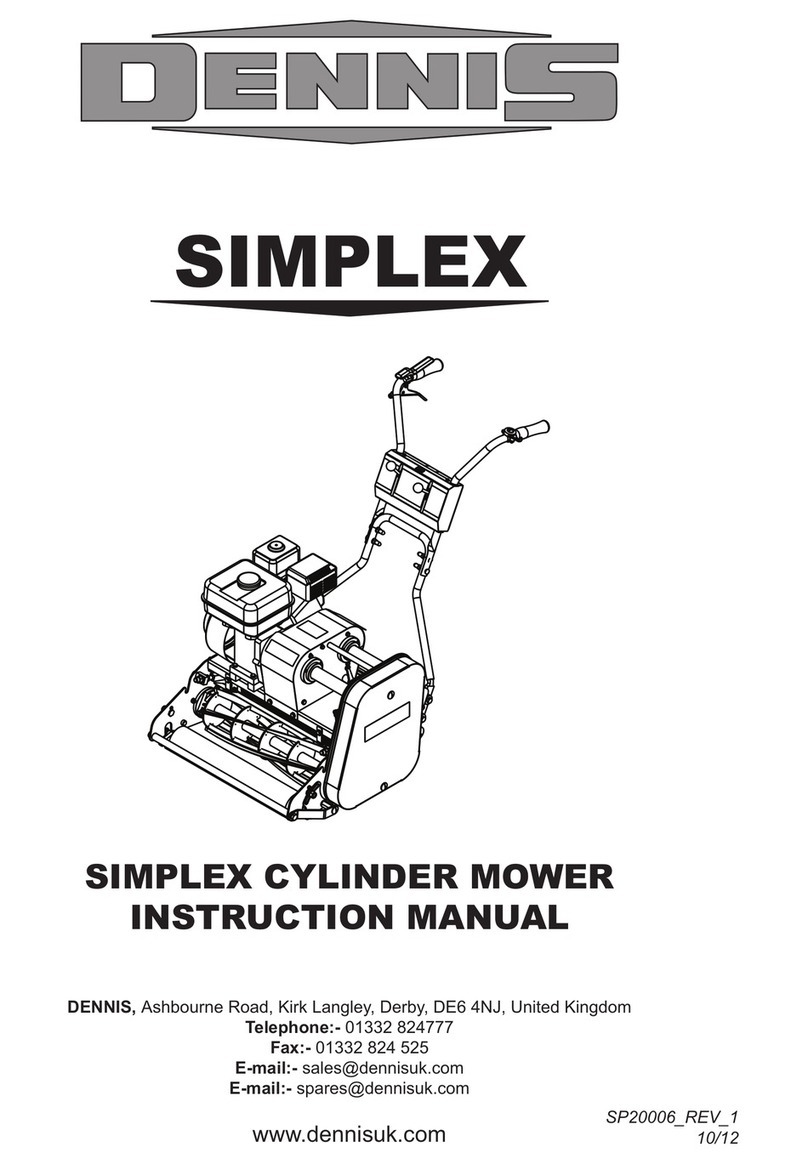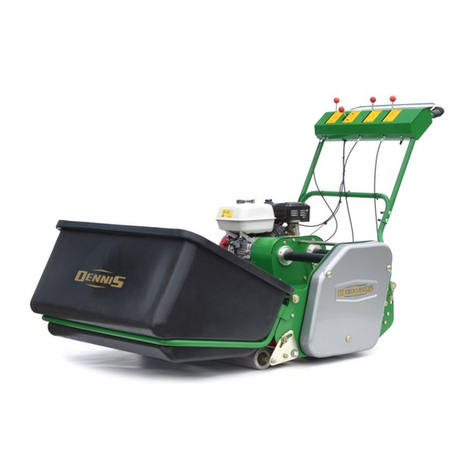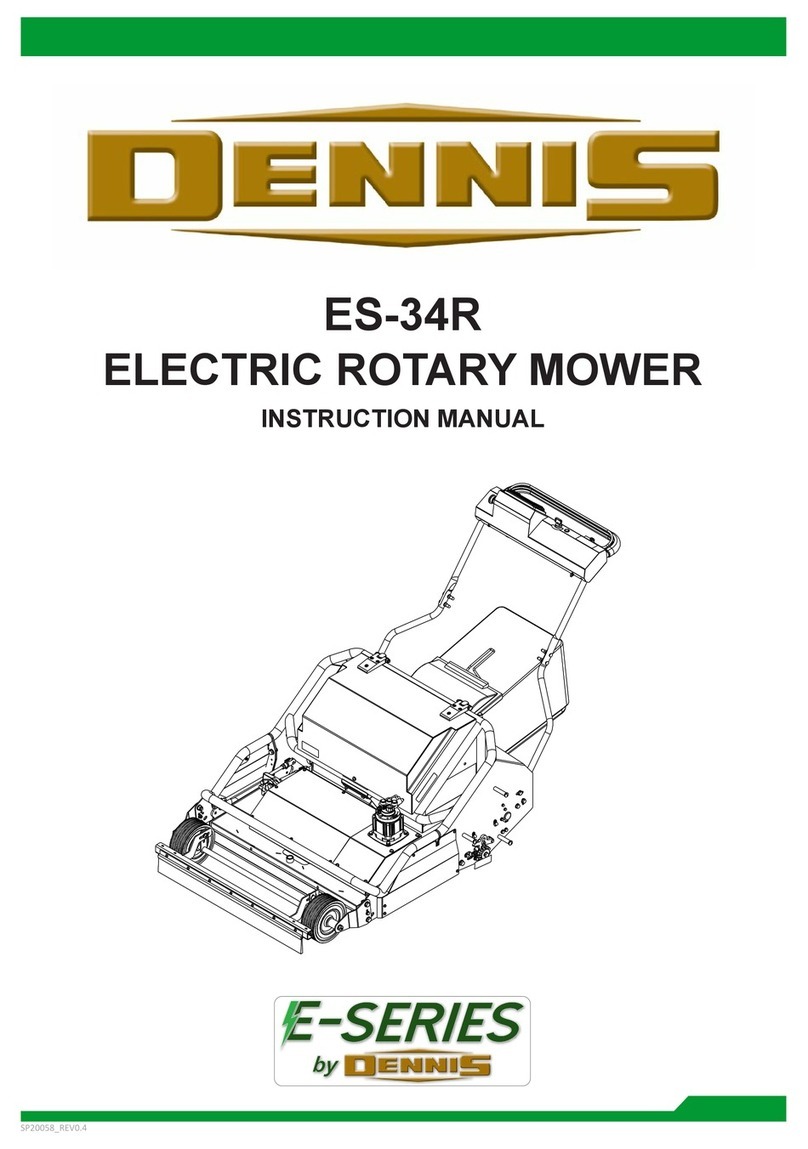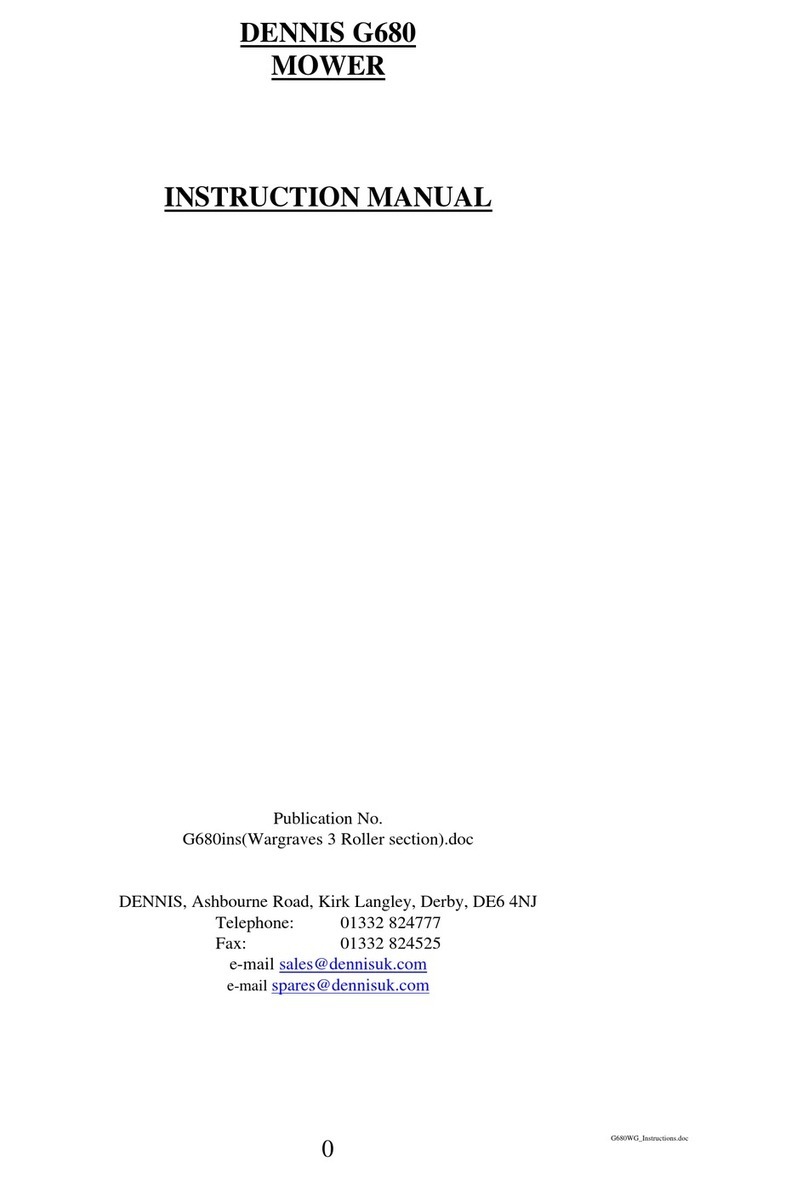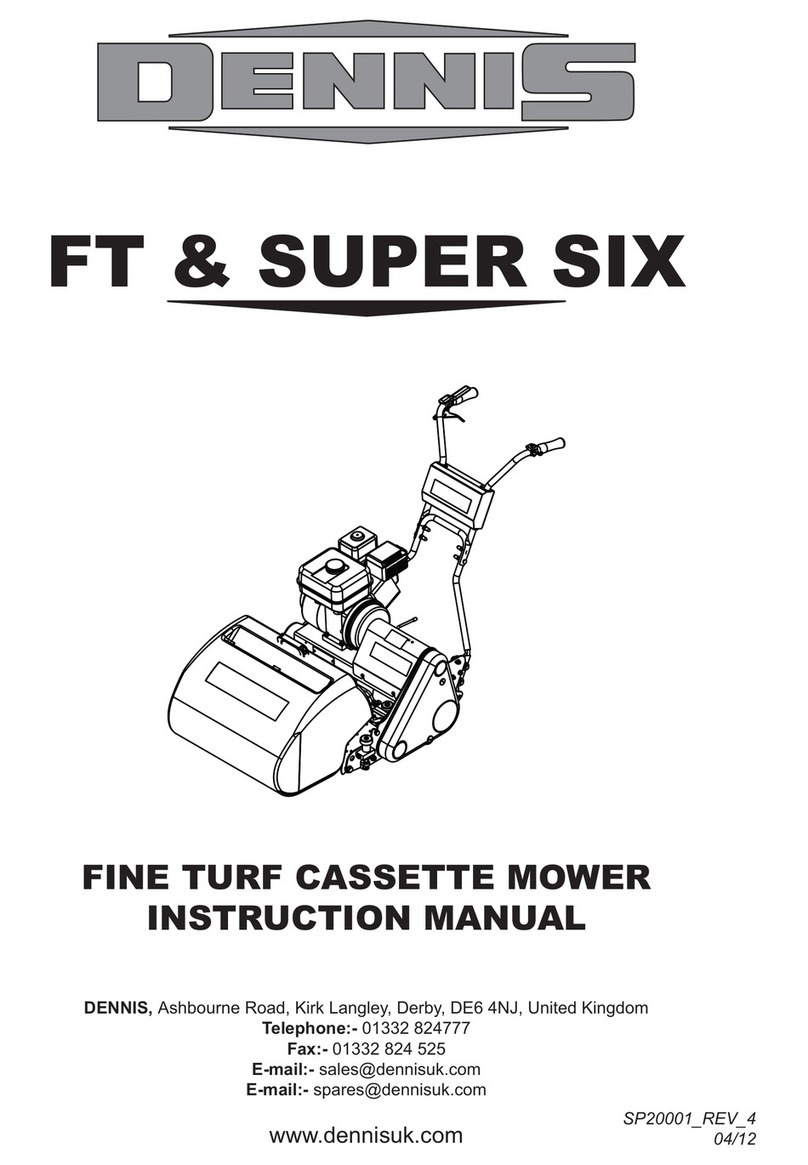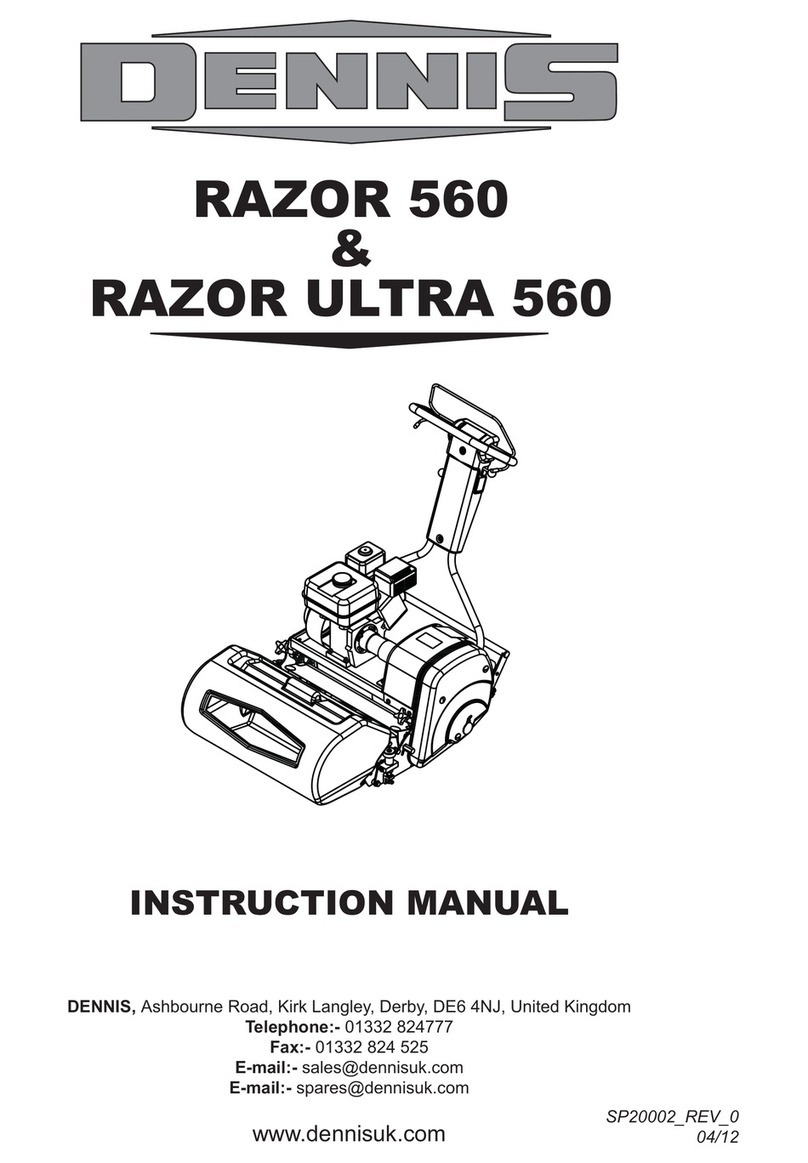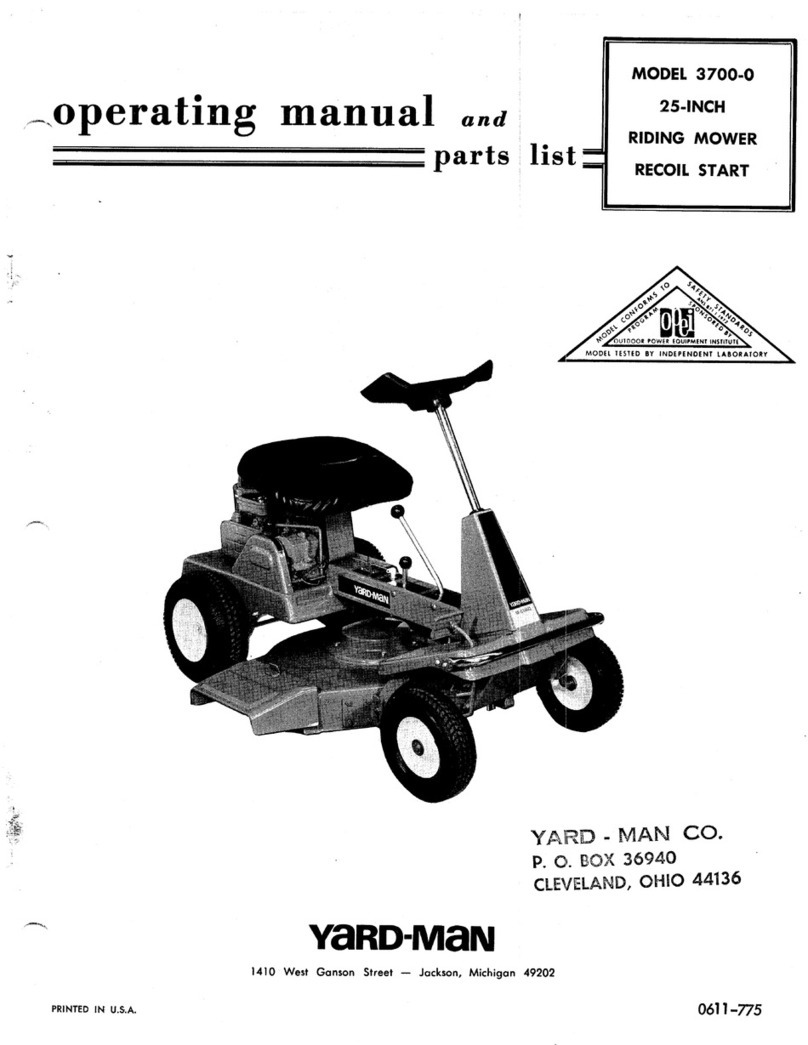6
FT Range SP20001_REV_2
Important Safety Instructions
In order to operate the machine safely please follow these Health and Safety guidelines.
TRAINING
READ THE INSTRUCTIONS CONTAINED IN THIS MANUAL WITH CARE. IF YOU ARE IN
ANY DOUBT PLEASE ASK YOUR EMPLOYER OR CONTACT US DIRECT AT DENNIS.
CAUTION
• Be familiar with the controls and the proper use of the equipment.
• Never allow children or people unfamiliar with these instructions to use the mower. Local regulations or insurance may
restrict the age of the operator.
• Never mow while people, especially children, or pets are nearby.
• Keep in mind that the operator or user is responsible for accidents or hazards occurring to other people or their
property.
PREPARATION
•While mowing always wear substantial footwear and long trousers. Do not operate the mower barefoot or in open
sandals.
•
Thoroughly inspect where the equipment is to be used and remove all stones, sticks, wire, bones and other foreign objects.
PETROL IS HIGHLY FLAMMABLE AND WILL DAMAGE GRASS IF SPILT.
WARNING
A) Store fuel in containers specifically designed for this purpose.
B) Refuel out doors and do not refuel whilst smoking.
C) Add fuel before starting the engine. Never remove the cap of the fuel tank or add petrol while the engine is running or
when the engine is hot.
D) If petrol is spilled do not attempt to start the engine but move the machine away from the area of spill and avoid
creating any sources of ignition until the vapours have dissipated.
• Replace damaged or faulty silencers.
• Before using the machine always inspect the safety devices including the cut off switch and the blades for excessive
wear or damage. Replace if necessary.
OPERATION
• Do not operate the engine in a confined space where dangerous CARBON MONOXIDE fumes can collect.
• Mow only in daylight or good artificial light.
• Avoid operating the machine in wet grass where feasible.
• Always be sure of your footing on slopes.
• Walk. Never run.
• Walk across the face of slopes, never up and down.
• Exercise extreme care on slopes when changing direction.
• Do not mow excessively steep slopes.
• Use extreme caution when reversing or pulling the machine towards you.
• Stop the blades if the mower has to be tilted for transportation when crossing surfaces other than grass and when
transporting the mower to and from the area to be mown.
• Never operate the mower with defective guards or shields or without the safety devices, for example without the
deflector plate or grassbox in place.
• Do not change the engine governor settings or overspeed the engine.
• Disengage all blades and drive clutches before starting.
• Start the engine carefully following the instructions with feet well away from the blades.
• Do not tilt the mower when starting the engine.
• Do not put hands or feet near or under rotating parts. Keep clear of the discharge opening at all times.
• Never pick up or carry the mower while the engine is running.
